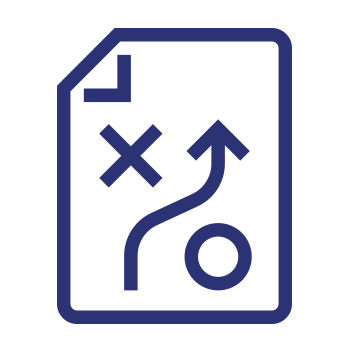The 3-2-1 Backup Rule: Why It’s Important
Your company’s data is one of your greatest assets. However, many businesses do not implement the required tools and systems until a situation occurs. At this point, it may be too late. That is why proactive measures are imperative.
For those currently seeking a backup and recovery solution, the 3-2-1 rule is a concept you should be mindful of. Acting as the best practice for data backup and recovery, it’s important to get into the habit of utilizing this highly effective strategy.
What Is the 3-2-1 Backup Rule?
When broken down, this proactive strategy is rather simple.
The “3-2-1 backup rule” means that you should:
- Always keep three files of your data, including the original copy in addition to a minimum of two backups (two locally, which will be stored on different devices; as well as one offsite).
- In relation to data backup, be sure to store your data on two separate storage types.
- An on-site disaster could quickly wipe locally stored information — even if the data was stored on two separate devices. This is why you must also backup your data to an offsite location.
So, you should essentially store three backups, two locally and one remotely — hence the “3-2-1 rule.” No matter happens, this means that you’ll have a copy of your data.
Why Is the 3-2-1 Backup Rule Relevant?
According to the National Archives & Records Administration in Washington, 93% of companies who lost their data center for 10+ days due to a disaster situation filed for bankruptcy within one year of the initial occurrence (50% filed immediately).
From disaster situations to system failures, security breaches to accidental deletion, there are many causes of data loss. In fact, it’s reported that approximately 70% of all businesses have experienced (or will experience) data loss.
For this reason, the statement, “An ounce of prevention is worth a pound of cure” is incredibly relevant. By implementing the 3-2-1 rule, you can effectively implement preventative measures to avoid future data loss. As discussed, this could be the deciding factor between a company’s failure or long-term success.
How Your Business Can Implement the 3-2-1 Backup Rule Today
To begin, you must first create a backup and recovery plan. In doing so, you’ll not only develop beneficial systems but will also become more mindful of any weak spots within your company’s current security mechanisms and data storage systems.
Could hackers easily get into your systems?
Perhaps you have yet to address your virus-protection programs?
All of these are important to consider moving forward.
In terms of the 3-2-1 rule, this three-step strategy should become an immediate priority.
- Step 1 – Create a minimum of three copies. Your first copy will be your primary source of data (stored on your internal hard drive), followed by two copies stored on two independent devices.
- Step 2 – Physically store your two backup copies in two different media sources. For example, you should store your first copy on an external hard drive. The second copy should be stored on another device, such as an SD card or USB drive. You can also store two copies on internal hard drives, as long they’re stored in separate locations.
- Step 3 – Always create an offsite backup. If your company doesn’t have another branch office, storing to the cloud is an ideal choice. To transfer your backup data offsite much more rapidly, built-in WAN acceleration may be of interest to your company.
Starting today, it’s important to view your data as investment capital. By implementing the 3-2-1 rule, you can gain peace-of-mind while preventing a potentially disastrous situation — the type that could potentially put you out of business.
Stephen Covey said it best, “I am not a product of my circumstances. I am a product of my decisions.”
Looking for ERP and IT solutions? Please contact us today!






